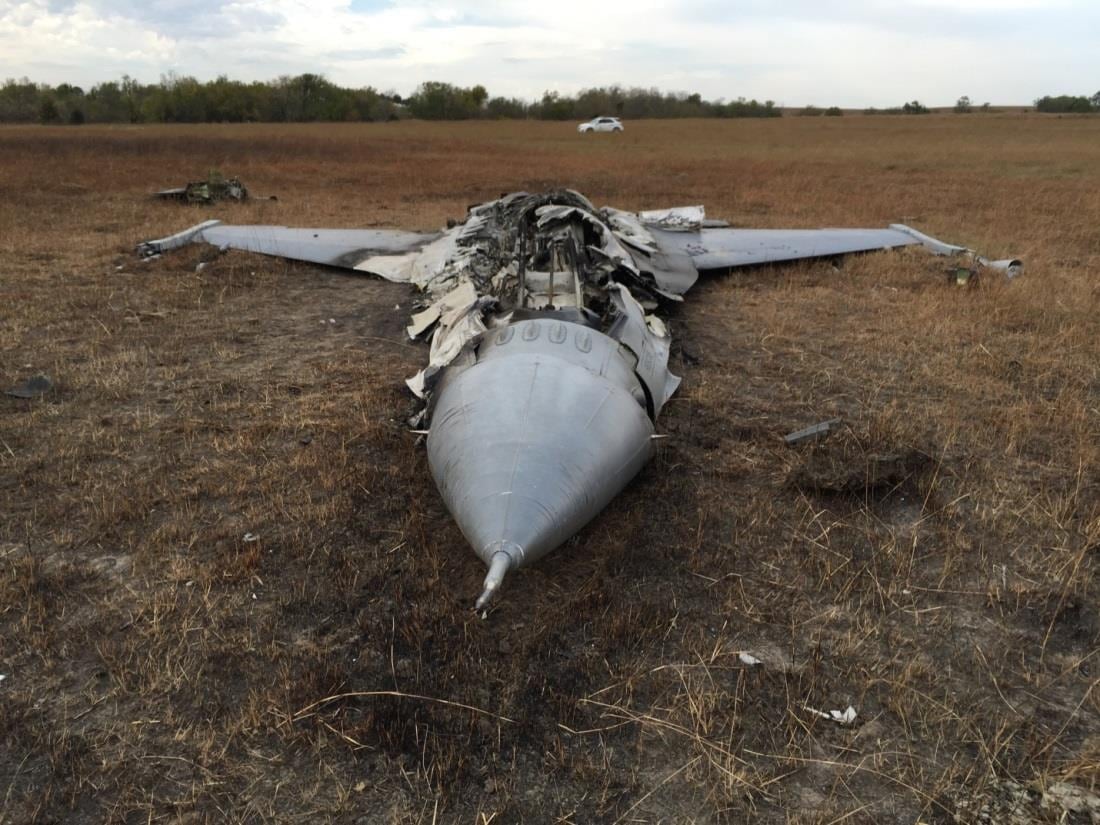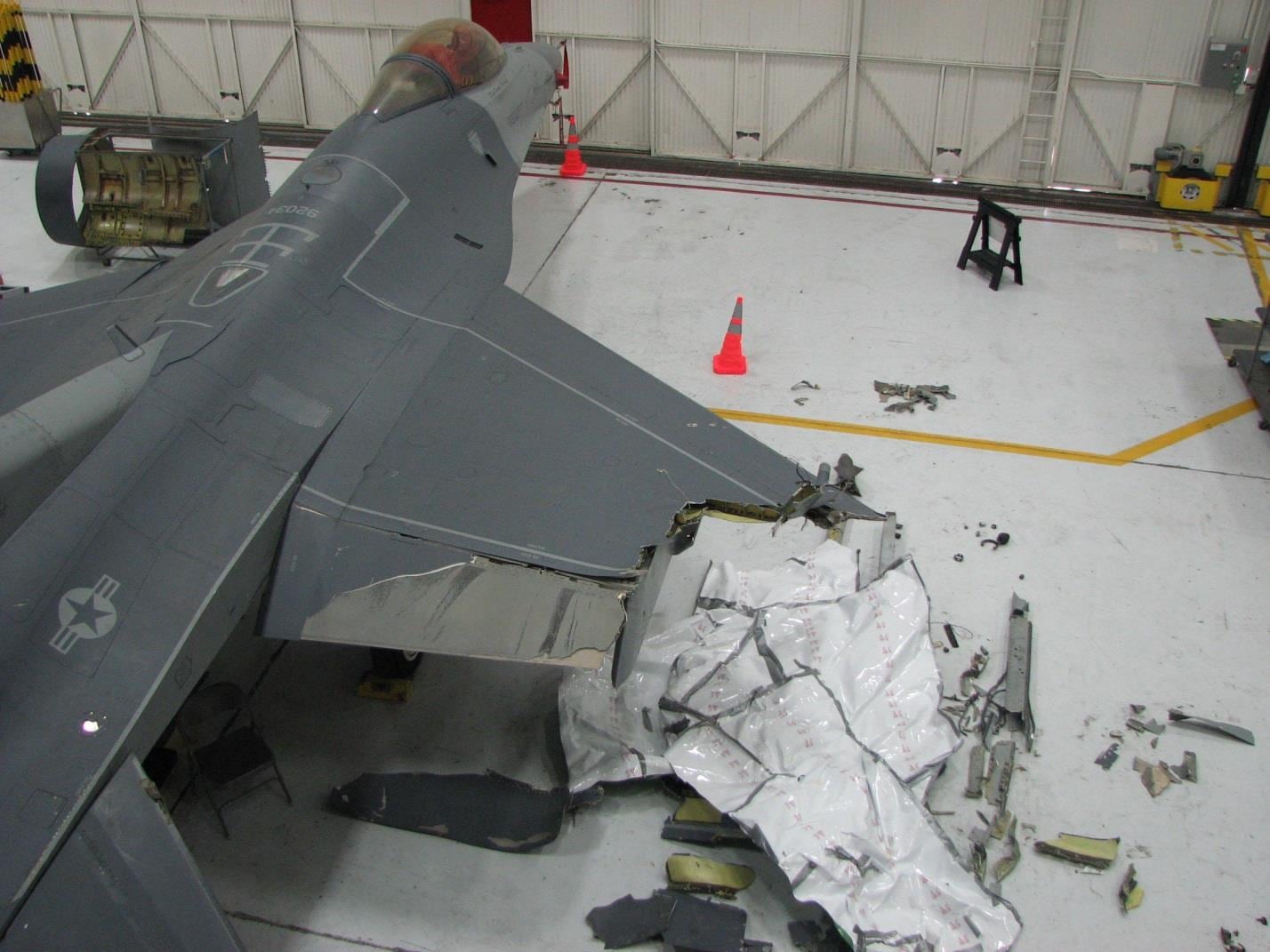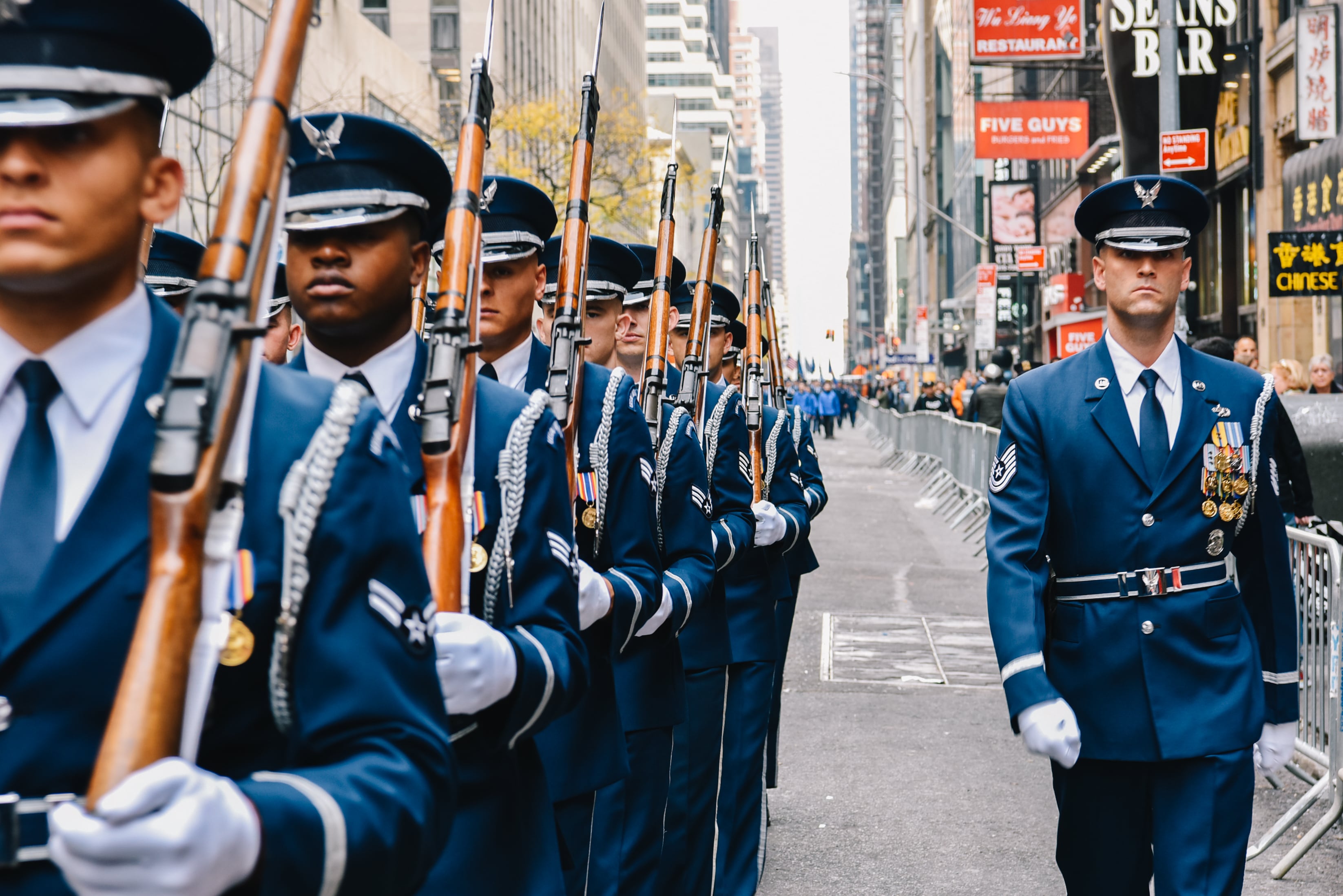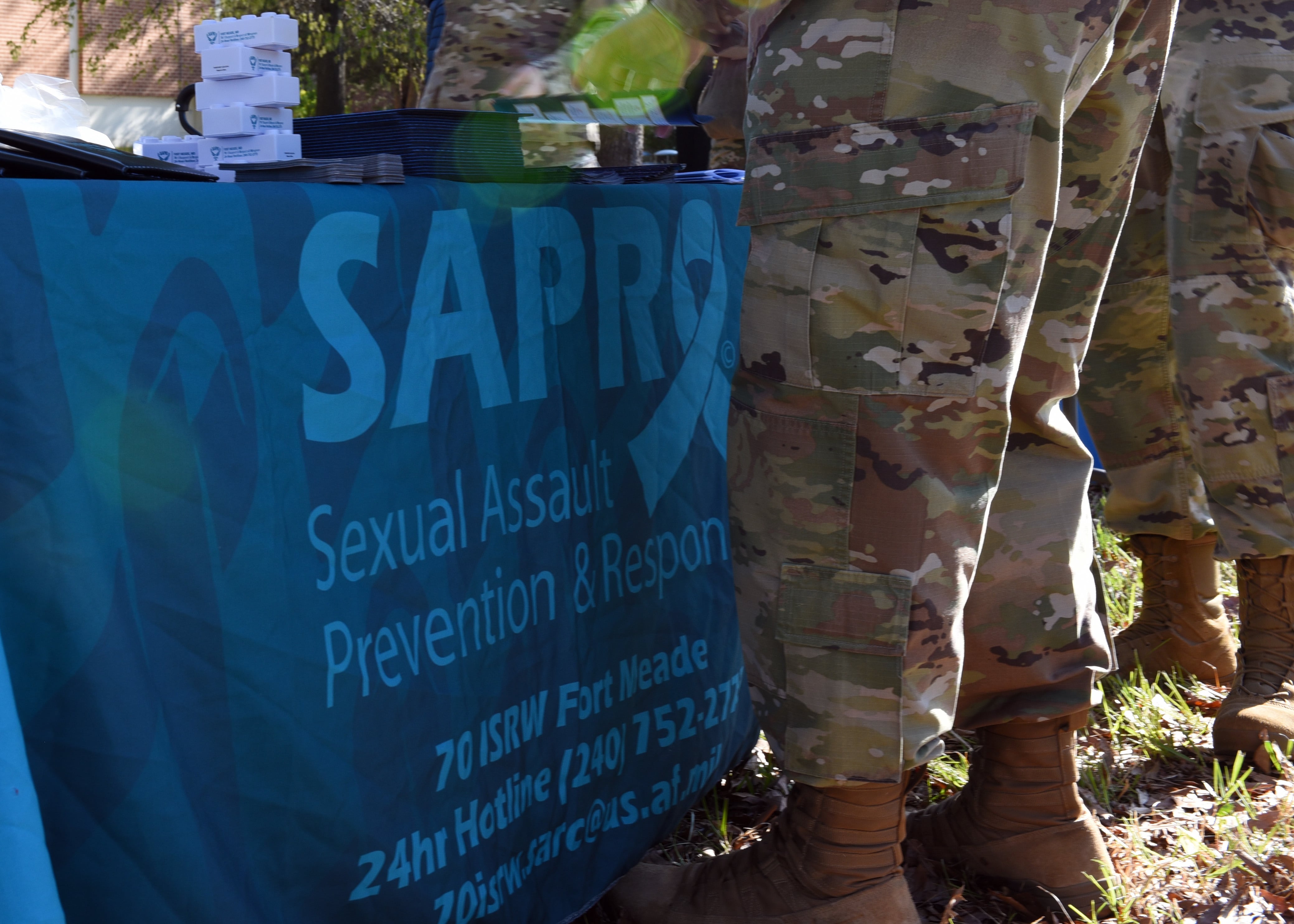Two F-16s collided on a training mission last October A training mission went awry when an F-16 student pilot failed to keep eyes on his instructor during a mock dog fight, causing the two F-16s to collide last October in Kansas, according to an Air Force Investigation Board report released Friday found.
Both pilots, assigned to the Air National Guard's 138th Fighter Wing at Tulsa, Oklahoma, survived the crash near Moline, Kansas. The student One pilot returned to base with five feet of the jet's wing missing. The instructor other pilot, whose aircraft was a total loss, was forced to eject and suffered minor injuries.
One pilot was forced to eject, with the other flying his F-16 back to base with five feet of its right wing missing, following the collision on Oct. 20 near the town of Moline. The total damage estimate of the crash is about $22 million, with no additional damage to private property, according to the report an Air Force Accident Investigation Board report released Feb. 20.
The two pilots took off at 2:03 p.m. Oct. 20 from Tulsa Air National Guard Base, Oklahoma, for a routine training mission. The lead first pilot was the an instructor, who had in the F-16, having flown about 2,400 flight hours. The A student pilot, with 106 hours in the jet, followed was the second.
They flew about 80 miles to the Eureka Military Operating Area in Kansas for a "tap the cap" training scenario. For this mission, the two pilots would fly an oval over an area of about 10 nautical miles while waiting for an attacker, another F-16 from the unit, to come from an unknown direction. The two pilots successfully completed one run in the scenario, took taking out the attacker, and prepared for another run.
At 2:20:17 p.m., the attacker came into view, approaching the two at about 20 nautical miles north on the nose of their F-16s. The pilots defaulted to the instructor serving as the "engaging fighter," whose main duty was taking out the enemy. The student pilot's role was the "supporting fighter," keeping a visual of his wingman at all times and taking a shot if possible.

The other F-16 involved in the mishap crashed near Moline, Kansas. The pilot was able to eject.
Photo Credit: Air Force
As the enemy jet approached, the instructor called for a "bracket" maneuver, where the two jets split off to, letting the enemy fly between, and to attempting to merge from behind for a shot. The student pilot took the right of the bracket.
When the pilots began to merge, the student was in the best defensive position. The report stated that at this point, the instructor should have told him to go for the shot.

The student pilot involved in the mishap was able to return to base even though his jet was heavily damaged.
Photo Credit: Air Force
At 2:21:00, the instructor radioed "1's tally one," which means he could see the adversary, but couldn't make a declaration of hostile intent. He turned toward the enemy to take a shot if the student, serving in support, could identify the other jet as hostile.
Three seconds later, the student pilot radioed "Two's in 14 thousand," identifying his altitude and attempting to say he was joining the fight. This was the incorrect radio call, the report stated. Instead, the student pilot should have said "greasing in," to tell the instructor he was going to engage.

An aerial view of the crashed F-16 wreckage. The pilot suffered minor injuries during ejection.
Photo Credit: Air Force
This was the last time the student pilot saw the instructor. He called "2's merged hostile viper" at 2:21:08, turning across the enemy jet's tail.
The instructor, from a distance of almost two 2 miles, saw this turn, and incorrectly assumed the student had turned away from him to the east, instead of his actual maneuver to merge behind the enemy jet like a car entering a highway from an on ramp.
"Viewing an F-16 1.5-2 (nautical miles) away, rotating either toward or away from you, and similar in color, top to bottom can be misperceived as attested by (the instructor) pilot," the report states.
The instructor moved to get close behind the aircraft and tried to take a shot. After eight seconds, the student pilot radioed "2's engaged." At this point, the instructor realized that he misidentified the turn, and that the other F-16 was coming in on a collision course. The jets were about 2,000 feet apart with 800 knots of closure.
The instructor pilot He tried to maneuver, but there wasn't enough time. The student pilot's F-16 collided with him, with that jet's wingtip and missile cut through the right side of his F-16, slicing its right wing root, destroying the flaperon, severing the fuel manifold and shatteringed the right horizontal tail, rendering the aircraft it uncontrollable.
The student pilot lost five feet of his right wing, but was able to keep it in control. He reported seeing white smoke from the other F-16 as it descended, and radioed to the pilot "bailout, bailout, bailout."
The instructor's cockpit began to fill with smoke, and he said he was disoriented during the descent.
"(Instructor pilot) described the fall of the aircraft as a leaf falling from a tree," the report states.
He heard the radio call convincing him to eject.
Another F-16 joined the student pilot on his wing to make sure the jet was safe enough to return to base, where the student pilot he was able to land without incident.
The instructor landed about 1.5 miles away from the wreckage site, with the jet previously serving as an enemy overhead kept to keep watch as he landed and directed the instructor pilot to walk to a nearby farmhouse for rescue. The two talked by radio, with the instructor pilot first asking where the student was, and then making sure this pilot had enough fuel.
Accident Investigation Board President Col. Christopher Alderdice wrote in his opinion of the investigation that the student pilot "disregarded his primary responsibilities" to keep a visual and de-conflict flight paths with the instructor pilot. Additionally, contributing causes to the crash were the student not radioing that he couldn't see the instructor, the instructor misperceiving the student's turn at the merge and the instructor not switching roles when the student was in better position to fight.





